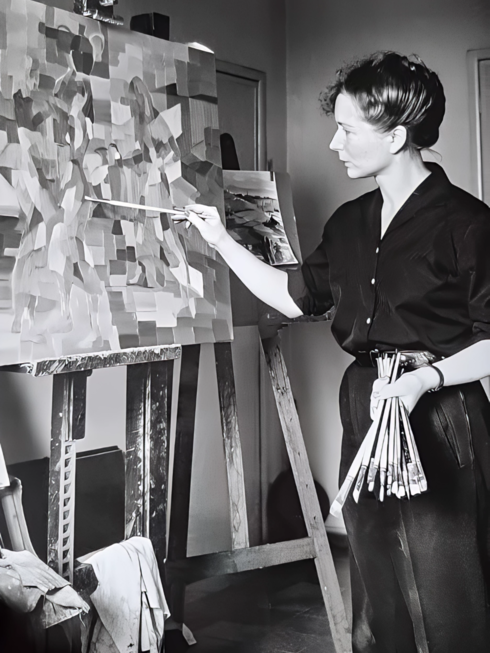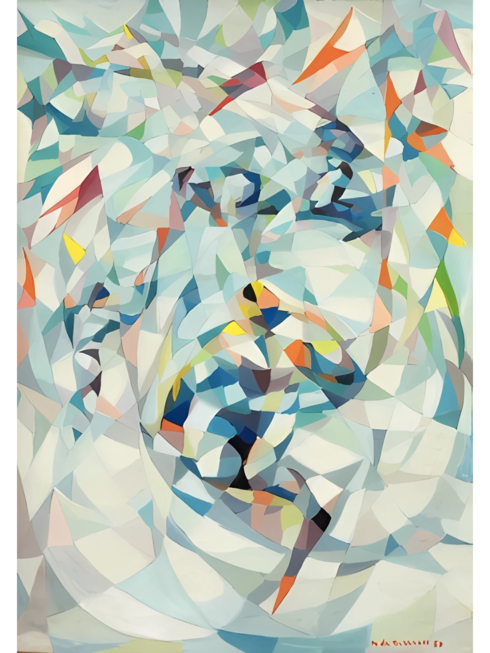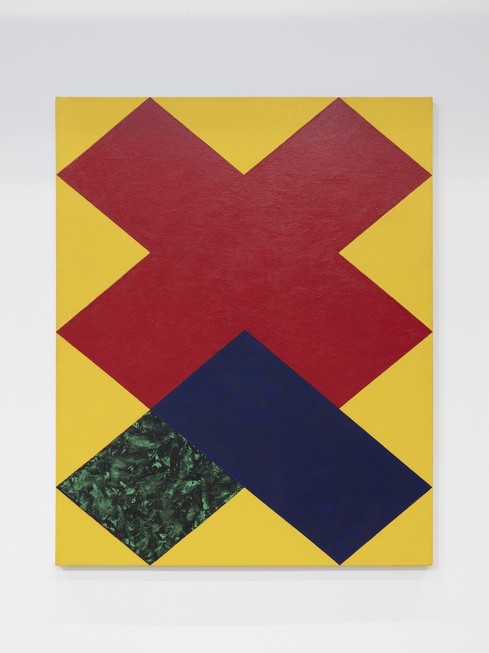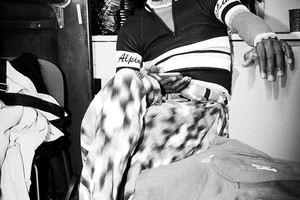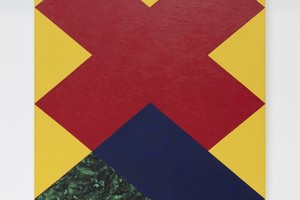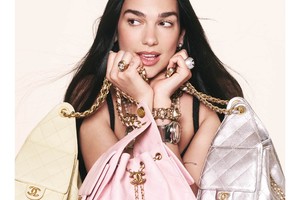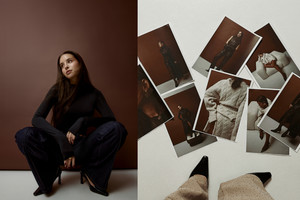Maria Sandström is the multi-talented artist known for her colorful and characterful portraits. The swedish artist began her career in London as an art director working in the film and TV industry, getting recognition with awards from The Royal Society of Arts and the Notting Hill Art Club. Now tit's her paintings and glass work making headlines.
Her work have been sold in the UK, Australia, Los Angeles, Spain, and France. Odalisque got a quick chat with the artist regarding her new installation ''Twisted Sisters'', a colorful hand of glas sculptures.
Q: Tell me about your new collection, Twisted Sisters?
Twisted Sisters was born from fire and shaped by hand, but really, these glass monkeys have minds of their own. They twist and turn into existence—whimsical, sharp, a little mischievous. Each one has a story, a personality, a presence. They’re inspired by iconic women—Florence, Dolly, Eartha—figures who broke the mold in their own ways. And like them, these sculptures don’t just sit quietly on a shelf; they stare right back at you. It’s a collection about the beauty in the unexpected, the elegance in the odd.
Q: How did Twisted Sisters come about?
It all started when Orranäs Glasbruk reached out after a TV feature on Kulturnyheterna. They invited me to the Kingdom of Glass, this legendary hub in Småland where glass has been shaped and transformed for centuries. It felt like the perfect place to push my ideas even further. My first series, Board of Directors, was born there—glass monkeys named after the most common names of board members in Sweden. Peter, Lars, Anders, John, Jan. A quiet little rebellion in crystal form.
.
.
Q: What are your inspirations for Twisted Sisters?
Human behavior—always. The way we try to keep a straight face but end up betraying ourselves with the smallest flicker of an expression. We like to think we’re in control, but those little tells—an arched brow, a smirk, a side-eye—give us away. That’s what fascinates me. I’ve always been drawn to capturing those raw, unfiltered moments, and monkeys are the perfect stand-ins for us.
They don’t pretend. They react. They scheme. They play. Twisted Sisters is all of that—expressions frozen in glass, exaggerated just enough to make you feel like they know something you don’t. Add a bit of mischief, a love for bold color, and an obsession with the beautifully odd, and you get this collection. Human nature, just with a little more swing.
Q: How do you decide the color palette for your work?
My artistic method is simple: I don’t plan. I just do whatever feels right. There’s no structure, no rules. Every piece starts differently, even though I’m always making monkeys. I pick my colors based on whatever vibe I’m getting at the time. There’s no formula, just feeling. I’d say my practice is messy, spontaneous, and a bit all over the place. I trust whatever comes up in the moment and let it happen. For me, making art—it’s about being in the moment and seeing where it takes me. That’s what makes each piece interesting.
Q: If I may ask, why apes?
Apes because they’re the closest thing to humans. I find renderings of humans a bit… boring. It all started when my daughter was little, and she painted herself as a mandrill. I thought it was fascinating—the idea of capturing that primal energy and expression without being literal. It stuck with me. In fact, I have a huge poster of her face painting on my wall. It’s like a constant reminder of how much there is to explore in that strange, human-like world of apes.
.

Q: Will you make more glass sculptures in the future, or was this a limited edition?
Both Bolagstyrelsen (five pieces) and Twisted Sisters are limited editions. Right now, there are three pieces in Twisted Sisters, but I might add one or two more to complete the series. As for the future—who knows? I’m always open to where the work takes me. I’d love to explore large-scale sculptures at some point, and I’ll definitely continue with my paintings. The journey never really ends; it just shifts direction.
Q: Did you feel more creative working with glass instead of paintings? Was there a difference in your artistic expression?
No, I’d say my creative freedom feels larger with painting. I know the material inside and out, so there’s a certain ease and flow in the process. With glass, it’s a different story. There are so many technical aspects to consider, and I’m also dependent on glassmasters to help bring my vision to life. I need to trust their skill and expertise, because glass is unpredictable. Colors can shift completely during the process—something that starts out brown could turn into silver by the end. It’s a bit of a wild ride. So while I can express myself freely in both mediums, glass adds another layer of complexity and challenge that keeps me on my toes.
Q: Your paintings are very colorful, what do you wish the viewer would feel when looking at your art?
I’m not one to dictate how people should feel, but definitely not bored or indifferent. I want the expression and the relationship with the title to spark something, even if it’s just a moment of surprise or curiosity. The title adds a layer of complexity—sometimes it guides the viewer, sometimes it throws them off. The title isn’t just a label, it’s part of the experience, often creating a bit of tension or contrast that makes you stop and think. That moment of realization is where the work feels complete.
I’ve noticed that people who enjoy my work often find a connection to David Shrigley’s pieces too, and I think that’s because we share a similar approach. We both play with titles and work with naive, almost childlike motifs. There’s this raw, unpolished energy that invites the viewer to make their own interpretations—and that’s where the fun is.
Q: What does spring/summer 2025 look like for you?
This spring, I’m fully immersed in preparing for my upcoming exhibition at WAY gallery, where I’ll be unveiling new work, including Twisted Sisters.
When I’m not in the studio, I’m with my boyfriend, actor Kristofer Kamiyasu, and our kids. We’re fortunate to have plenty of family time, but when Kristofer’s filming, he’s often in far-flung corners of the world, so I try to tag along whenever I can. Last summer, we spent quite a bit of time in London while he was filming The Sandman for Netflix. It felt almost like coming home, having lived there for almost 10 years before moving to Sweden. Walking those familiar streets again, revisiting old spots—it was a nostalgic journey. London will always have a special place in my heart, and being able to explore it again with Kristofer was a true gift.
It’s a balancing act, but no matter where we are, the moments we share together are what matter most. As for the summer, it will likely bring a few spontaneous trips and probably some less exciting surprise renovations at home. The joy of old houses.
Find more of her work here.

